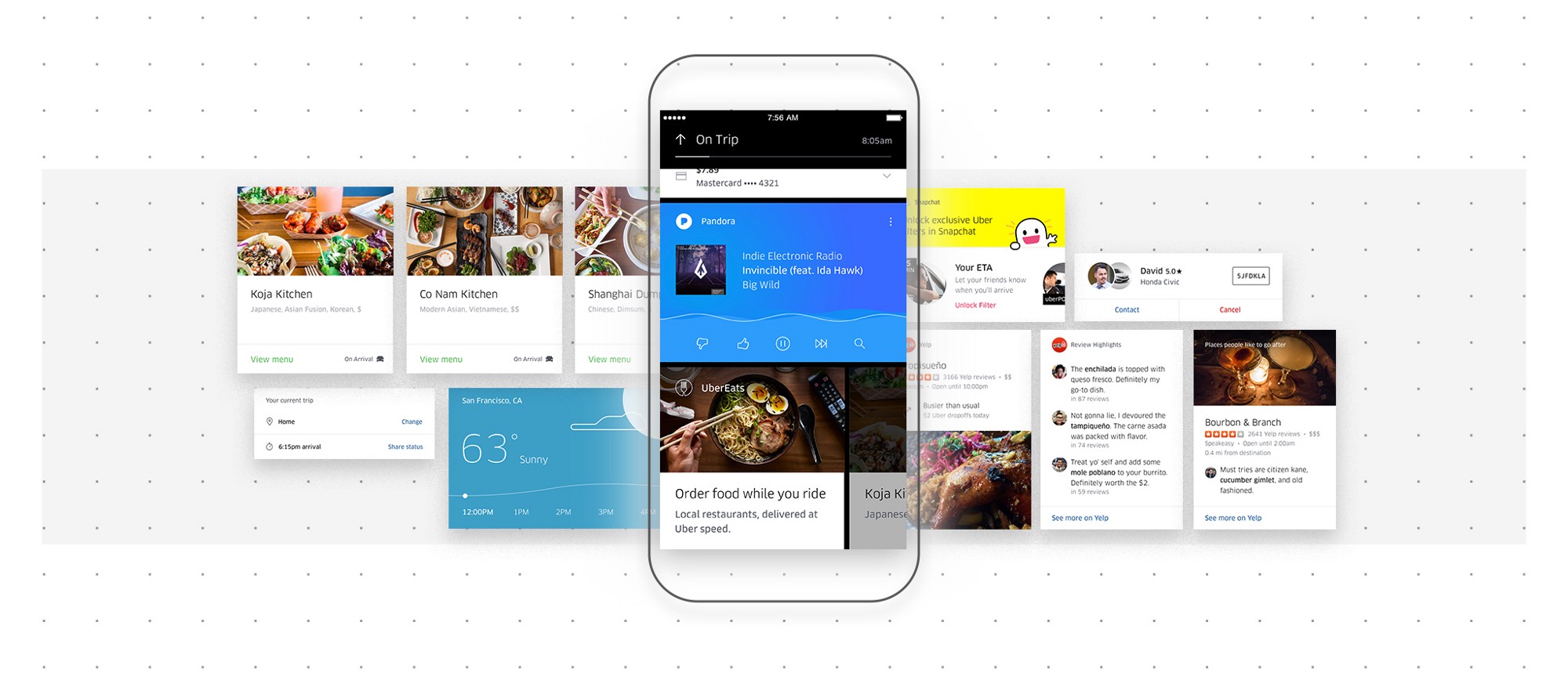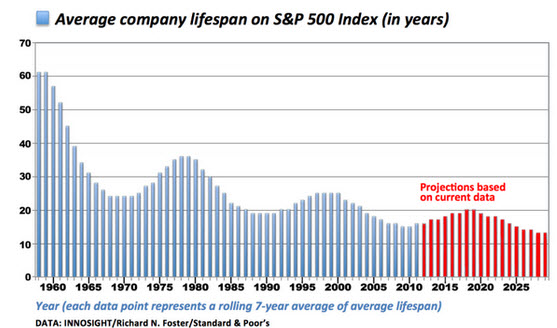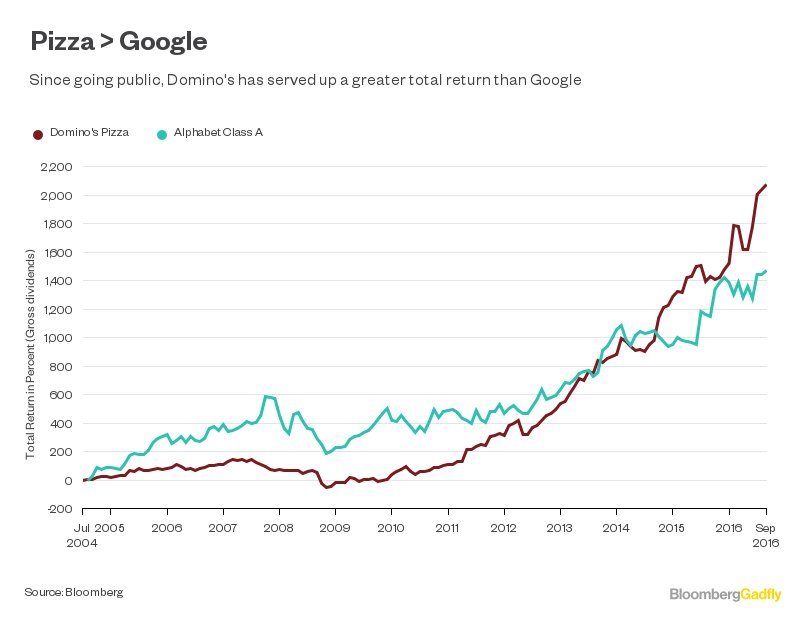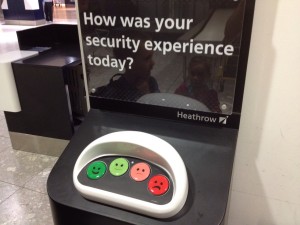3 UX Design Predictions for 2017

2016 was a year for the books. No matter what your political views or personal interests are, I think we can all agree the past 12 months have been full of surprises. While there were lows, there were also quite a few major advances in the UI/UX design world, like the ones mentioned in my 2016 UX predictions. Let’s take a look back at how accurate the crystal ball was last year, then look ahead at a few trends I expect we’ll see more of in 2017.
2016 UX Design Prediction #3: More brands will tailor digital experiences with custom content and native advertising.
Score: A+
Native advertising (ads, brands, and product placement that are subtly baked into the overall experience) is everywhere, and it keeps getting more nuanced. Native advertising is converging with custom content, too, like we’re seeing with companies like Uber. The company recently released a new version of the Uber app that not only helps you get from point A to point B faster, but also personalizes the riding experience with a new feature called Uber feed.
Source: https://medium.com/uber-design/designing-the-new-uber-app-16afcc1d3c2e#.9vwmad23i
“We used to think our job was done once you got in a car, and that the faster we got you out of our app, the better the experience,” Uber designer Didier Hilhorst explained. “But as we looked ahead at each step, we realized we were neglecting the longest part of the journey: being on your way. We thought about the music you might want to listen to on your way, the menu at the restaurant you’re headed to, and how you could stay connected to the people you’re going to see. We built a platform for content that will put you and your journey at the center.”
Customized experiences like Uber’s have grown to be so popular that they’re raising the bar for entire industries. In my original post, I mentioned Trunk Club as an example of a brand that designed their sign-up process around an interactive questionnaire so they can change the site’s content based on the user’s answers. One of their primary competitors, Stitch Fix, does something similar, but they take it one step further.
In addition to asking new customers to fill out a style questionnaire when they sign up, Stitch Fix also requests links to your social media profiles so they can see your style in action. Then, they ask more granular questions after every “fix” so they can hone in on what you like. This benefits the customer by sending them clothes that are a better fit for their style and drives more revenue for the business. Win-win!
This year, I expect custom experiences will go to the next level as virtual and augmented reality becomes more popular.
This year, I expect custom experiences will go to the next level as virtual and augmented reality becomes more popular. Pokémon Go is a perfect example. It quickly became one of the most downloaded games ever created and the fastest game to ever hit $500 in revenue. When businesses saw Pokémon Go’s potential, they got on the bandwagon, too. Instead of brushing the game off as “that weird thing all the kids are playing,” they scrambled to figure out how their location could leverage a nearby PokeStop so they could get in on the action.
2016 UX Design Prediction #2: There will be a rise in mobile usage and video.
Score: A+
This one was a slam dunk, too. The Pew Research Center reports that over 72% of U.S. adults now own a smartphone, and ownership is skyrocketing at even faster rates in emerging parts of the world, like the Middle East and Latin America. Plus, 50% of American participants in a recent survey said they watch video on mobile devices. This trend has sparked an increase in mobile carriers offering more unlimited data plans to accommodate the bandwidth needed to consume tons of content anytime, anywhere.
Source: http://www.pewglobal.org/2016/02/22/smartphone-ownership-and-internet-usage-continues-to-climb-in-emerging-economies/
Not surprisingly, social media platforms took the video ball and ran with it last year. Instagram came out with Instagram Stories and Live, while Twitter launched live streaming of NFL games and other major events. Facebook also launched Facebook Live and video ads, in addition to creating a new “Video” tab in their main navigation. (You know the video trend is here to stay when Facebook redesigns their whole nav to include video!)
2016 UX Design Prediction #1: More products will incorporate intelligent assistance.
Score: A-
Intelligent assistance is definitely catching on, but I’m giving this prediction an A- because it’s still in the early stages. With Amazon launching Alexa and Google coming out with Google Home, it’s safe to say many people will have some sort of robotic assistant in their homes within the next few years.
These voice-enabled devices have also sparked a rise in chatbots that help complete tasks and find information in a natural, conversational way. Alexa, Google, and Siri paved the way for other chatbots that are designed to make our lives easier and bring information to our fingertips, such as IBM Watson, Slack, and Facebook Messenger’s integration with many B2C brands.
Voice-enabled devices have also sparked a rise in chatbots that help complete tasks and find information in a natural, conversational way.
Before long, interactions with intelligent assistance will likely become even more invisible. A few words will direct our self-driving car or place an Amazon order and have a drone deliver it within 15 minutes. These types of technology are already being piloted, so it’s only a matter of time before they’re part of our daily lives.
So overall, I’d say my 2016 forecast fared pretty well. Two A+ scores and one A-. Not bad!
Now, on to the 2017 UX predictions.
Over the past few years, there has been a movement toward customizing experiences and building up internal UX teams who can help their companies continue to innovate. There are plenty of benefits to these trends, and we’re also starting to see ripple effects, like the dangers of echo chambers, the need for fresh perspectives, and more. Here’s what I expect to see this year…
2017 UX Design Prediction #3: Brands will be forced to embrace technology or die.
There’s no doubt our world has changed dramatically because of technology. Things are moving faster than ever and turning over more frequently. One of CB Insights’ recent reports shows that the average lifespan of a company on the S&P 500 index is 75% shorter than it was just a few decades ago.
Source: https://www.cbinsights.com/blog/this-time-is-different/
The survivors are the ones who are embracing modern technology and adapting their services and products for the future. Take the pizza industry. Pizza Hut has dominated the industry for years, with Domino’s trailing close behind. However, things are starting to shift. Pizza Hut’s key financial indicators are declining, while Domino’s return in gross dividends are growing exponentially (even more than Google!).
Source: https://www.bloomberg.com/gadfly/
How are they doing it? Modern, mobile, cloud-based, data rich, technology. “I think it has really boiled down to convenience and the ability for Domino’s to really capitalize on the move toward online and mobile,” said Stephen Anderson, a restaurant industry analyst with Miller Tabak. While Pizza Hut keeps building brick-and-mortar locations, Domino’s has gone all-in on technology by designing an awesome app and online ordering system, including the infamous “Pizza Tracker” that actually makes waiting fun. This technology has impressed customers so much that over half of orders are now placed online.
Disruption comes quickly, and those who don’t adapt leave themselves open for an unfortunate surprise.
Disruption comes quickly, and those who don’t adapt leave themselves open for an unfortunate surprise. In 2008, the CEO of Blockbuster quiped, “Neither RedBox nor Netflix are even on the radar screen in terms of competition.” Bet he wishes he took them more seriously.
So, who would you rather be like? Blockbuster and Pizza Hut, or Netflix and Domino’s? Those who embrace technology will thrive in 2017 and beyond, while others are simply buying time before they die off.
2017 UX Design Prediction #2: Usability research and testing will go from being optional to required.
There’s a natural fear of not wanting to evaluate UI/UX design because the work you’ve already created might be wrong or not as effective as you hoped. But if you’re focused on business success, it’s no longer an option. Usability research and testing may be intimidating, but the results are worth it, and it’s becoming nearly impossible to stay competitive without it.
Usability research and testing may be intimidating, but the results are worth it, and it’s becoming nearly impossible to stay competitive without it.
Consider airports, places that are inherently stressful for most visitors. London Heathrow, one of the busiest airports in the world, could very easily lean on the common excuses for not doing usability research:
“We’re a public facility with limited resources.”
“It’s too expensive.”
“Our visitors are rushed. They don’t have time to provide feedback.”
“We’ve been doing this for decades. We know what we’re doing.”
But like many organizations that are realizing the power of usability testing and user feedback, the airport understood the challenges but knew the benefits would be worth it.
Heathrow also is a great example of how to do lightweight research. Their primary research mechanism was these stations, which were placed right after security (the peak of stress in the user journey).
Source: ttps://www.customerthermometer.com/customer-surveys/heathrow-airport-has-got-it-right/
Talk about guts! What’s more, the airport actually posts the results on large TV screens and their website for all to see, providing trust-building transparency for users and accountability for staff. The result? Satisfaction ratings increased almost 30% and reached record highs. A true example of user success = business success!
Usability research doesn’t have to be costly or complex. It just needs to exist.
London Heathrow proves usability research doesn’t have to be costly or complex. It just needs to exist. Luckily, there are so many great tools being developed. Whether it’s survey services like UX Rings, simple exercises like Jobs to be Done interviews, or engaging with an external partner like Drawbackwards who specializes in usability research, brands now have access to amazing resources that they can use to understand the customer journey, diagnose the real problems, and identify solutions.
Taking chances and prototyping new solutions is smart, but guessing the problem is not. And in 2017, we shouldn’t be guessing anymore. Our team at Design.org and Drawbackwards has recognized this and made the switch to regular testing of our ideas through the design process. We’ve seen huge successes because of it, and we expect other brands to realize its value this year, too.
2017 UX Design Prediction #1: There will be a backlash on hyper-customized experiences that create echo chambers.
Ever notice that when you “like” an article or watch a video on Facebook, you start seeing similar content in your News Feed? That’s no accident. The early days of the Internet were all about having no filters. Now, all we see is filters.
Facebook’s algorithm watches every move you make on their site and around the web, then tailors your experience to show you more of what they think you’ll like. In theory, the more you like what you see, the more time you’ll spend on their site. Fortunately and unfortunately, the theory works, and Facebook isn’t the only one taking advantage of it.
The problem is these customized experiences can go too far and create echo chambers, where we’re only seeing and hearing things we’re already interested in and agree with. Technology is creating bubbles that cater to their users’ interests, but fail to expose them to new ideas.
This isn’t just affecting the few hours that we spend each day on social media – it’s affecting entire economies and changing the course of a whole generation. Enter: President-elect Donald Trump.
If we only see what we want to see, we won’t even know other things exist.
No matter what side of the political fence you’re on, it’s impossible to ignore that the echo chamber phenomena influenced an entire presidential election. People naturally “like” social media content that aligns with their beliefs and gravitate toward other people who share the same ideals. But as we saw with the 2016 election, many Americans live in an online bubble, leading to one of the biggest surprises in election history – even for the journalists who had been covering the campaign trail for over a year.
“Journalists spend a lot of time on Twitter, and their information bubble rarely includes Trump supporters,” a recent VICE News article explained. “This could help explain why many journalists were caught off guard by the depth of Trump’s support — and why the soul-searching in the media continues long after Election Day.”
The election was a perfect storm that proved the dangers of echo chambers: If we only see what we want to see, we won’t even know other things exist. We must break out of this bubble and find more diverse points of view. Watch FOX News one day and MSNBC the next. Read The Wall Street Journal on Sunday and People Magazine on Monday. Seek out unbiased, third-party partners and fresh perspectives. Ask satisfied customers what they love about your product and people who cancelled why they left.
By being more intentional about exposing ourselves to the good, the bad, and the ugly, we’ll develop more well-rounded solutions and a deeper empathy that will bring both our businesses and our users more success.
Bonus Prediction: More products will realize they’re in the experience design business.
Experience design has been widely adopted by software companies, but the secret is starting to get out among other industries as well. Businesses are realizing the value of a well-designed, user-centered experience and that the traditional structure and ways of thinking aren’t working anymore.
For decades, the typical corporate hierarchy and industrial workflows have helped us be more efficient and scale companies from small businesses to big brands. However, the silos, processes, and fixed mentalities that come along with this traditional approach are not effective for modern, innovative businesses.
Going into 2017, more businesses in every industry will realize they have to adapt to survive.
Silos and hierarchy create a lack of trust and confidence among team members, slow them down, and stifle innovation. Employees often end up feeling so frustrated and demotivated that they often have to ask for permission to complete critical parts of their tasks, fight for what they need just to do their job well, or waste time waiting on team members in another area rather than solving problems or brainstorming new solutions.
Going into 2017, more businesses in every industry will realize they have to adapt to survive. Design, development, and product management teams will break down the silos and come together on one unified Product team. They’ll adopt agile processes that allow for quick iteration, deployment, and testing. They’ll collaborate with external partners to complement their knowledge and skill set. And they’ll do usability research before, during, and after development, even if they aren’t in the business of designing technology or experiences.
Amazon’s recent announcement of their Amazon Go stores shows this trend in action.
Amazon is turning their website into an in-store experience. In order to do that effectively, they can’t have disparate teams all over the world working on different projects one step at a time. Even though they started out as an online bookseller, they’re running a unified team to design the first experience of its kind. And I bet they won’t be the last to see the value in making this mental and physical shift.
2017: The Year of Breaking Out of the Bubble
If 2016 was the year of surprises, we hope 2017 will be the year of using those surprises to make positive changes. How can we respect our users more and give them more choice? How can we all step outside the echo chamber and open our eyes to fresh perspectives? How can we break away from old business habits and leverage modern technology to increase success?
At Drawbackwards and Design.org, we’re ready to flip the switch and let users see the world better. Will you, too?
To learn more about the trends we’re seeing in UX design or discuss how we can help your business break out of the bubble, get in touch with us.





